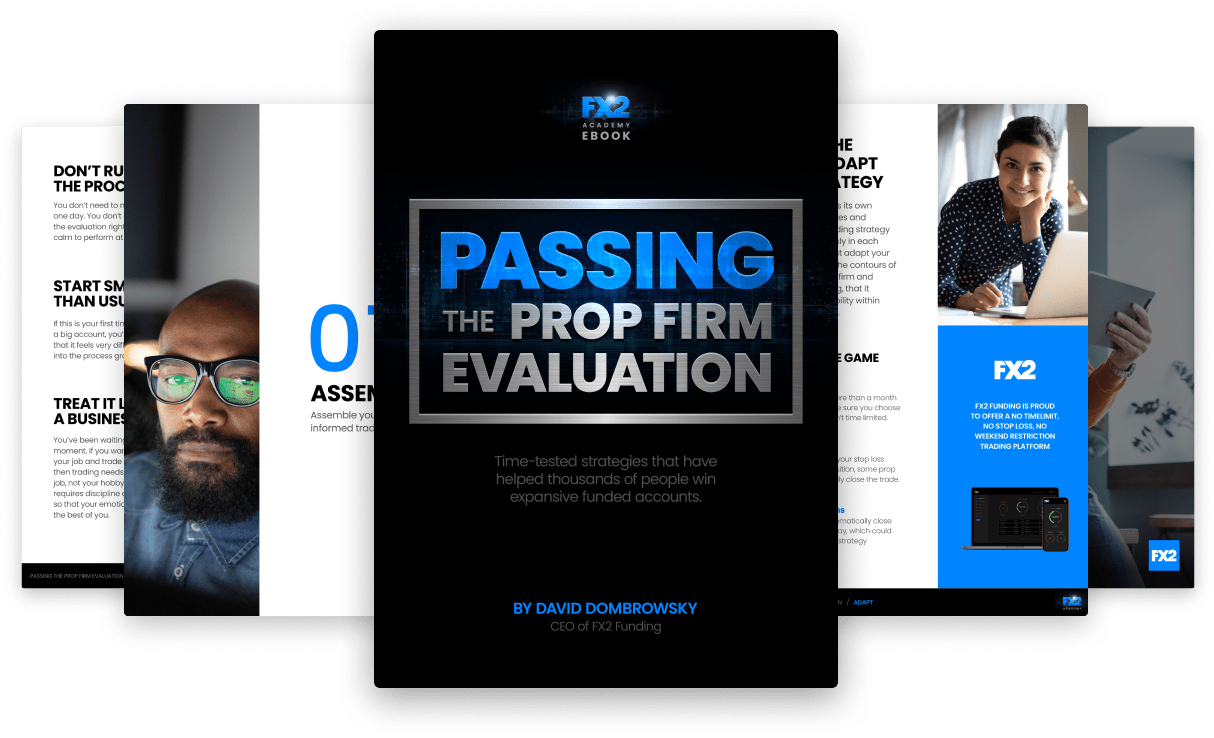Market volatility is a key concept for traders and investors, as it represents the degree of variation in the price of a financial instrument over time. Understanding and navigating market volatility can be crucial for developing effective trading strategies and managing risk.
Understanding Market Volatility
Market volatility is a measure of the rate at which the price of a financial asset fluctuates. It reflects the degree of variation in trading prices over a specific period and can be driven by a range of factors, including economic events, market sentiment, and geopolitical developments.
Definition of Market Volatility
Market volatility refers to the extent of price fluctuations in a market or a particular asset. It is often measured using statistical metrics such as standard deviation or variance, which quantify the dispersion of returns around the average price. High volatility indicates significant price swings, while low volatility suggests more stable prices.
Volatility can be classified into two main types:
- Historical Volatility. This measures past price fluctuations and is calculated based on historical price data.
- Implied Volatility. This represents the market's expectations of future price movements and is often derived from the prices of options contracts.
Causes of Market Volatility
Several factors can cause market volatility, including:
- Economic Data Releases. Announcements related to employment figures, GDP growth, inflation rates, and other economic indicators can significantly impact market volatility. Positive or negative surprises in these data points can lead to sharp price movements.
- Corporate Earnings Reports. Earnings announcements from major companies can cause volatility, especially if the results differ from market expectations. Positive earnings can drive stock prices up, while disappointing results can lead to declines.
- Geopolitical Events. Political instability, elections, and international conflicts can create uncertainty in financial markets, leading to increased volatility. Markets often react to geopolitical events as investors reassess risk and adjust their portfolios.
- Market Sentiment. Investor sentiment, driven by news, rumors, and market psychology, can also cause volatility. Sudden shifts in sentiment can lead to rapid buying or selling, amplifying price movements.
- Monetary Policy Decisions. Actions by central banks, such as changes in interest rates or quantitative easing programs, can influence market volatility. These decisions affect the cost of borrowing and the overall economic environment, impacting asset prices.
- Natural Disasters and Pandemics. Events like earthquakes, hurricanes, and health crises (e.g., the COVID-19 pandemic) can disrupt economic activity and create uncertainty, leading to increased market volatility.
Impact of Market Volatility on Trading
Market volatility can have both positive and negative effects on trading. Understanding these impacts is crucial for developing effective trading strategies and managing risk.
Positive Impacts:
- Trading Opportunities. High volatility can create numerous trading opportunities as prices move rapidly. Traders can capitalize on short-term price movements to generate profits.
- Price Discovery. Volatility can enhance price discovery by bringing new information into the market, helping to establish fair value for assets.
- Liquidity. Volatile markets often see increased trading activity and liquidity, making it easier to enter and exit positions.
Negative Impacts:
- Increased Risk. High volatility can lead to significant price swings, increasing the risk of large losses. Traders must be cautious and employ risk management techniques to protect their capital.
- Emotional Stress. Volatile markets can be stressful, leading to emotional decision-making. Traders must maintain discipline and avoid making impulsive trades based on fear or greed.
- Wider Spreads. During periods of high volatility, bid-ask spreads can widen, increasing trading costs. This can reduce profitability for traders.
Strategies for Trading Volatility
Developing strategies to trade volatility effectively is essential for managing risk and capitalizing on market movements. Here are some traditional and advanced approaches to volatility trading.
Traditional Approaches to Volatility Trading
Traditional volatility trading strategies focus on capturing price movements using established techniques. Some common approaches include:
- Trend Following. This strategy involves identifying and following the direction of the market trend. Traders use technical indicators such as moving averages and trendlines to determine the trend direction and enter trades accordingly. In volatile markets, trends can be more pronounced, providing opportunities for profit.
- Mean Reversion. Mean reversion strategies assume that prices will revert to their historical average over time. Traders look for assets that have deviated significantly from their mean and place trades expecting a return to the average. This approach can be effective in volatile markets where prices oscillate around a central value.
- Breakout Trading. Breakout strategies involve identifying key support and resistance levels and placing trades when prices break through these levels. Volatile markets often experience frequent breakouts, offering multiple trading opportunities. Traders use indicators such as Bollinger Bands and volume analysis to confirm breakouts.
- Options Trading. Options provide a way to trade volatility directly. Strategies such as straddles and strangles involve buying both call and put options to profit from significant price movements in either direction. These strategies can be particularly useful in highly volatile markets.
Advanced Volatility Trading Strategies
Advanced volatility trading strategies involve more complex techniques and tools to manage risk and enhance returns. Some of these strategies include:
- Volatility Arbitrage. This strategy exploits differences in implied volatility between related assets or markets. Traders take offsetting positions in options and the underlying asset to profit from changes in volatility. For example, if the implied volatility of an option is higher than the historical volatility of the underlying asset, traders might sell the option and buy the asset to capture the difference.
- Statistical Arbitrage. Statistical arbitrage involves using statistical models to identify mispricings in the market. Traders employ algorithms to analyze historical price data and correlations between assets, placing trades based on predicted price movements. This strategy can be effective in volatile markets where price relationships can change rapidly.
- Pairs Trading. Pairs trading involves taking long and short positions in two correlated assets. The idea is to profit from the relative performance of the assets rather than their absolute price movements. In volatile markets, the correlation between assets can break down, providing opportunities for pairs trading.
- Risk Reversal. This options strategy involves selling an out-of-the-money put option and buying an out-of-the-money call option. It is used to hedge against downside risk while maintaining upside potential. In volatile markets, this strategy can protect against significant losses while allowing for gains if the market moves favorably.
Implementing Volatility Trading in Different Market Conditions
To successfully trade volatility, it is essential to adapt strategies to different market conditions. Here are some tips for implementing volatility trading across various scenarios:м
- Bull Markets. In bull markets, volatility can be lower as prices generally move upwards. Trend-following strategies and buying call options can be effective in capturing gains during upward movements.
- Bear Markets. Bear markets are often characterized by higher volatility as prices decline. Strategies such as short selling, buying put options, and mean reversion can help traders profit from downward movements.
- Sideways Markets. In sideways or range-bound markets, prices fluctuate within a narrow range. Breakout trading and options strategies like straddles can be useful in capturing gains from price movements in either direction.
- High Volatility Periods. During periods of high volatility, risk management becomes paramount. Using advanced strategies like volatility arbitrage, pairs trading, and risk reversals can help manage risk while capitalizing on price movements.
Check out our guide to learn more about bullish and bearish flagging patterns.
Effective volatility trading requires the use of various tools and indicators to assess market risks and identify trading opportunities. These tools help traders analyze market conditions, measure volatility, and implement risk management strategies.
Using Indices and Market Data
Indices and market data are essential for understanding and measuring market volatility. Here are some key tools and indicators used in volatility trading:
- Volatility Index (VIX). Often referred to as the "fear gauge," the VIX measures the market's expectation of 30-day volatility implied by S&P 500 index options. A high VIX value indicates high market volatility, while a low VIX suggests stability. Traders use the VIX to gauge market sentiment and predict future volatility.
- Average True Range (ATR). ATR is a technical indicator that measures market volatility by calculating the average range between the high and low prices over a specific period. Higher ATR values indicate increased volatility, while lower values suggest more stable market conditions. ATR helps traders set stop-loss levels and identify potential breakout points.
- Bollinger Bands. Bollinger Bands consist of a moving average and two standard deviation lines plotted above and below it. These bands expand and contract based on market volatility. When prices move close to the upper band, the market is considered overbought, while prices near the lower band indicate an oversold market. Traders use Bollinger Bands to identify potential reversal points and measure volatility.
- Implied Volatility (IV). IV represents the market's forecast of a likely movement in an asset's price. It is often derived from the prices of options and provides insight into future volatility. High IV suggests that the market expects significant price movements, while low IV indicates stable conditions.
- Historical Volatility (HV). HV measures the actual volatility of an asset over a specific past period. It is calculated using standard deviation and helps traders understand how much the asset's price has fluctuated historically. Comparing HV with IV can provide insights into whether an asset is likely to experience higher or lower volatility in the future.
Leveraging Risk Management Techniques
Effective risk management is crucial for success in volatility trading. By implementing robust risk management strategies, traders can protect their capital and minimize potential losses. Here are some key techniques:
- Position Sizing. Determine the appropriate size of each trade based on your risk tolerance and the volatility of the asset. Smaller position sizes can help manage risk in highly volatile markets, while larger positions might be appropriate in more stable conditions.
- Stop-Loss Orders. Set stop-loss orders to limit potential losses on each trade. This ensures that a position is automatically closed if the price moves against you by a predetermined amount. For more detailed guidance, you can explore the risks and rewards of leverage trading.
- Diversification. Spread your investments across different assets and markets to reduce the impact of any single asset's poor performance. Diversification can help manage overall portfolio risk and smooth out returns.
- Hedging. Use hedging strategies to protect against adverse price movements. For example, options can be used to hedge long positions in stocks, providing downside protection while maintaining upside potential.
- Regular Monitoring and Adjustment. Continuously monitor your positions and adjust your risk management strategies based on changing market conditions. Regularly reviewing and updating your approach can help ensure that your risk management remains effective.
The Bottom Line
Volatility trading offers both opportunities and challenges. Understanding market volatility, implementing effective trading strategies, and using the right tools and indicators are crucial for success. By staying informed and disciplined, traders can navigate volatile markets and capitalize on price movements while managing risk effectively.
Are you ready to take your trading to the next level? Explore our programs at FX2 Funding and start your journey towards financial success.








